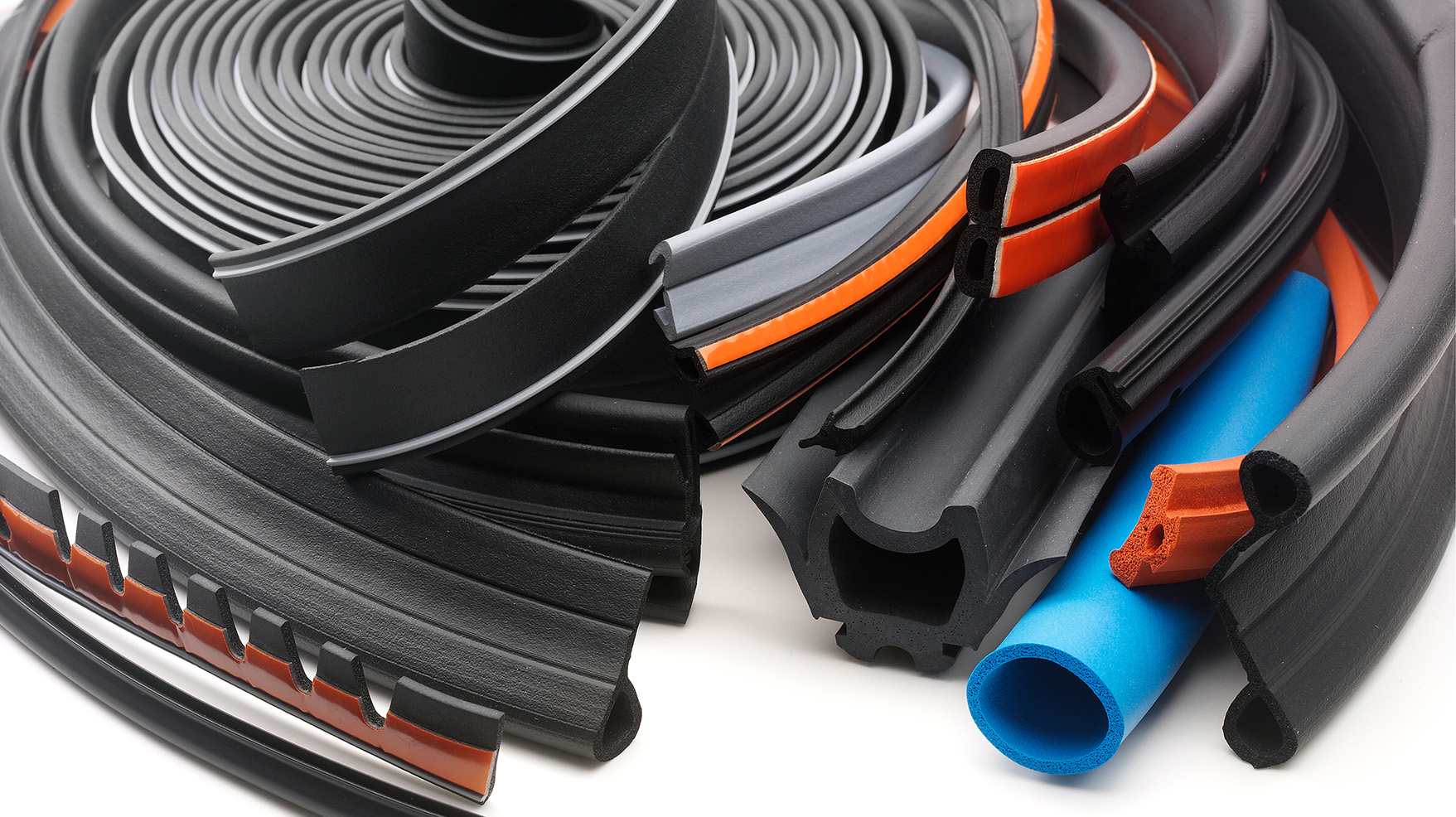EPDM - The Key to Compression Strength

Customers across various industries rely on us for seals with robust compression performance. These seals are designed to create effective closures with minimal force, ensuring easy latching without damage and consistent rebound after compression. Common applications include cabin seals in construction or agricultural vehicles, window and door seals and HVAC damper seals.
One of the best sealing materials for optimal compression strength is EPDM sponge. This soft material is produced through a process called “foaming,” which is the expanding of the rubber using mechanical or chemical blowing agents to create a low density, cellular material. EPDM sponge seals conform seamlessly to any channel, ensuring complete contact along the entire seam, even on uneven surfaces. This results in a secure seal that effortlessly closes and rebounds during operational cycles.
On the other hand, a dense, non-cellular sealing material would lead to high closing forces. These high closing forces can reduce sealing effectiveness, damage door wells and hinges over time, and shorten product life. In fact, a typical solution for individuals without access to sponge materials is to use a hollowed out dense material. While this method may allow the use of a denser, more durable material, it is not likely to produce a seal as effective as one using a sponge material.
When it comes to outstanding compression strength, EPDM sponge is the standout. Additionally, EPDM sponge materials exhibit excellent resistance against ozone and UV rays, making them a good choice for both indoor and outdoor applications. Their lightweight nature can enhance fuel efficiency in commercial trucking and assist door and window manufacturers in meeting environmental requirements. Moreover, sponge materials offer a favorable price point.
EPDM Sponge Seals Are Hard To Source
EPDM sponge seals pose challenges in manufacturing, and it discourages many sealing manufacturers from producing them. The intricate process involves managing numerous chemical reactions with precision, where even slight deviations can pose significant risks. Compounding becomes more complex, and the material behaves differently during extrusion than regular EPDM and other rubbers. Material can more easily snake or surge in the extrusion process, so vigilance in size or density is crucial.
The formulations are considered “scorchy,” meaning that they can prematurely cure or harden in the equipment without vigilant monitoring, especially compared to working with other materials. The curing media, like salt baths or microwave hot air must be maintained with a precise temperature range and constantly supervised. Balancing the curing process is crucial to capturing gases from the blowing agents that foam the rubber into sponge efficiently. However, if the rubber cures too quickly, proper extrusion becomes challenging. Even after extrusion, strict storage conditions, including climate control, are essential to prevent issues.
The bottom line is, a lot of extra skill is needed when you’re working with sponge EPDM, and it’s crucial for operators to be highly educated in their craft. Continuing to evolve as an operator through ongoing training regarding major investments in technology can help prevent time lost, wasted product, and of course, disappointed customers.
At Cooper Standard ISG, we offer decades of expertise in EPDM compounding. We have developed a strong culture and enthusiasm for enhancing this technology and ensuring precise accuracy in every batch. This level of dedication is unique to us, and I believe our customers recognize and appreciate it.
Expanding EPDM Sponge Capabilities
Our dedication and commitment to EPDM foaming and sponge material drives us to continuously enhance our capabilities in this challenging yet highly valuable material for the benefit of our customers.
For example, achieving the precise grade of sponge is crucial for various applications, with grades ranging from Grade 0 (the softest) to Grade 5, determined by the force required for 25% compression.
In addition, coloring EPDM sponge, a task that has been challenging to accomplish, has become a growing demand from customers seeking color matching for applications like white window frames or cabin door seals. To address this challenge, we have developed neutral-colored formulations and specialized pigments to meet this challenge effectively.
Overall, if you require optimal compression strength sealing for your products, feel free to reach out to the Cooper Standard team for assistance.
